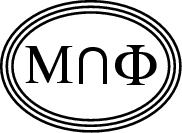
Back to
OP page
Combined
List
List by
Contributors
|
ENTROPY PRODUCTION
and nonequilibrium statistical mechanics
Contributed by: G. Gallavotti (Roma 1),
Nov. 6, 1998.
Abstract:
How to define entropy creation rate in a classical system in a
stationary state, under external nonconservative forces balanced (in
the average) by forces modeling a thermostat, is in general an open
problem. Attempts at defining it at least in special cases seem to
indicate that a general definition might be possible, and that a theory
of ``non equilibrium ensembles'' with general non trivial (although
simple) predictions may arise from it.
|

